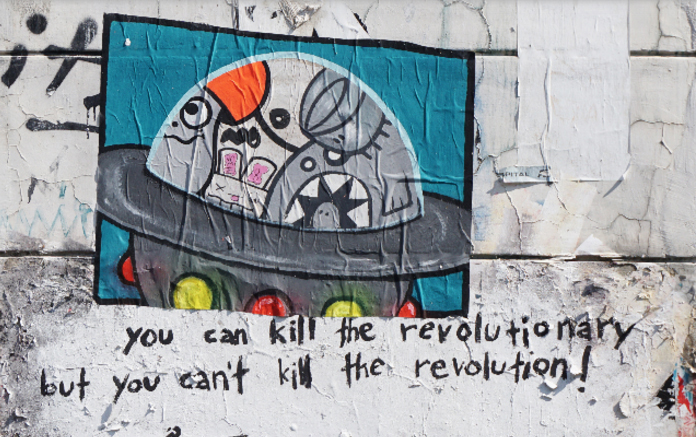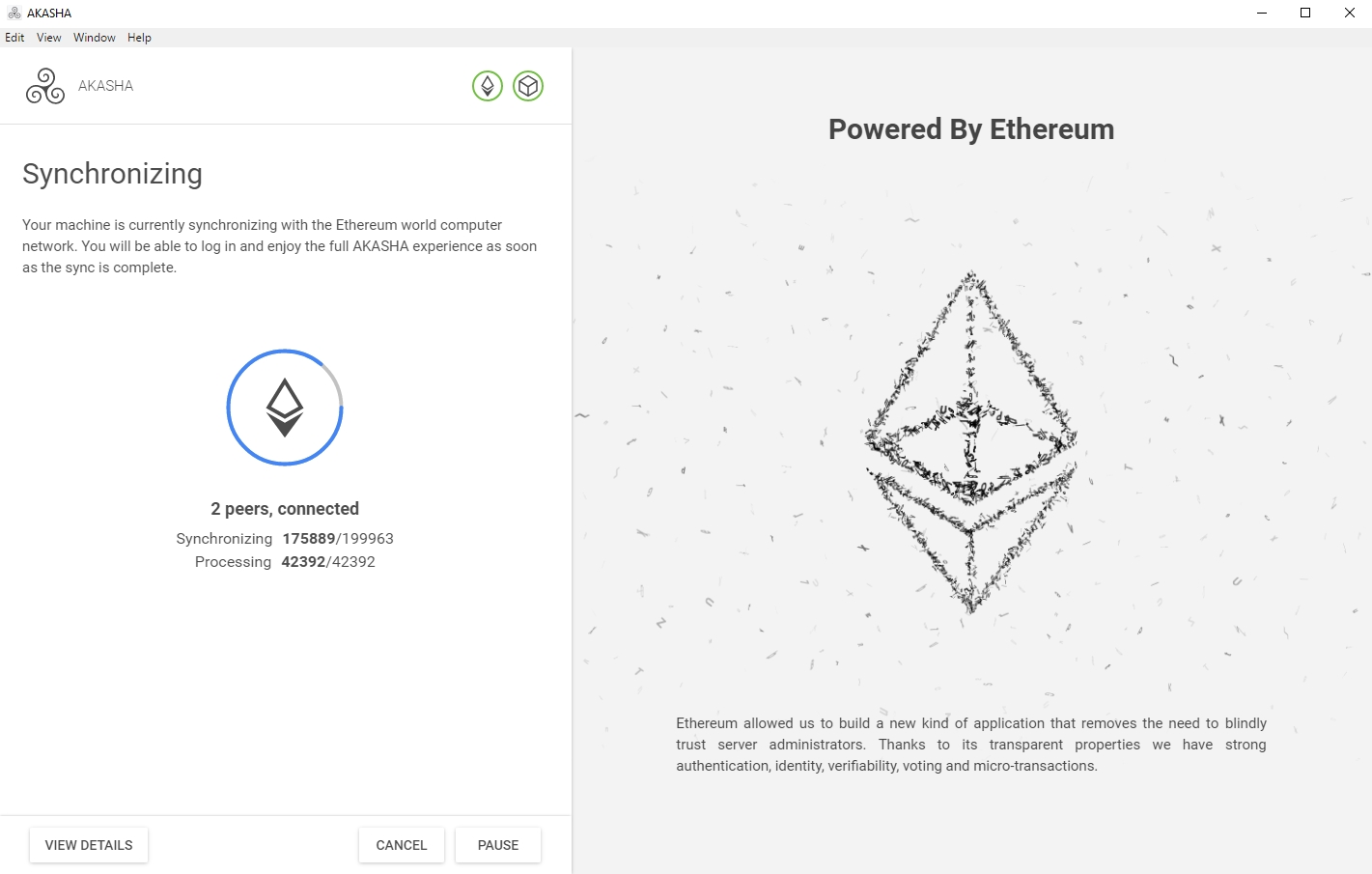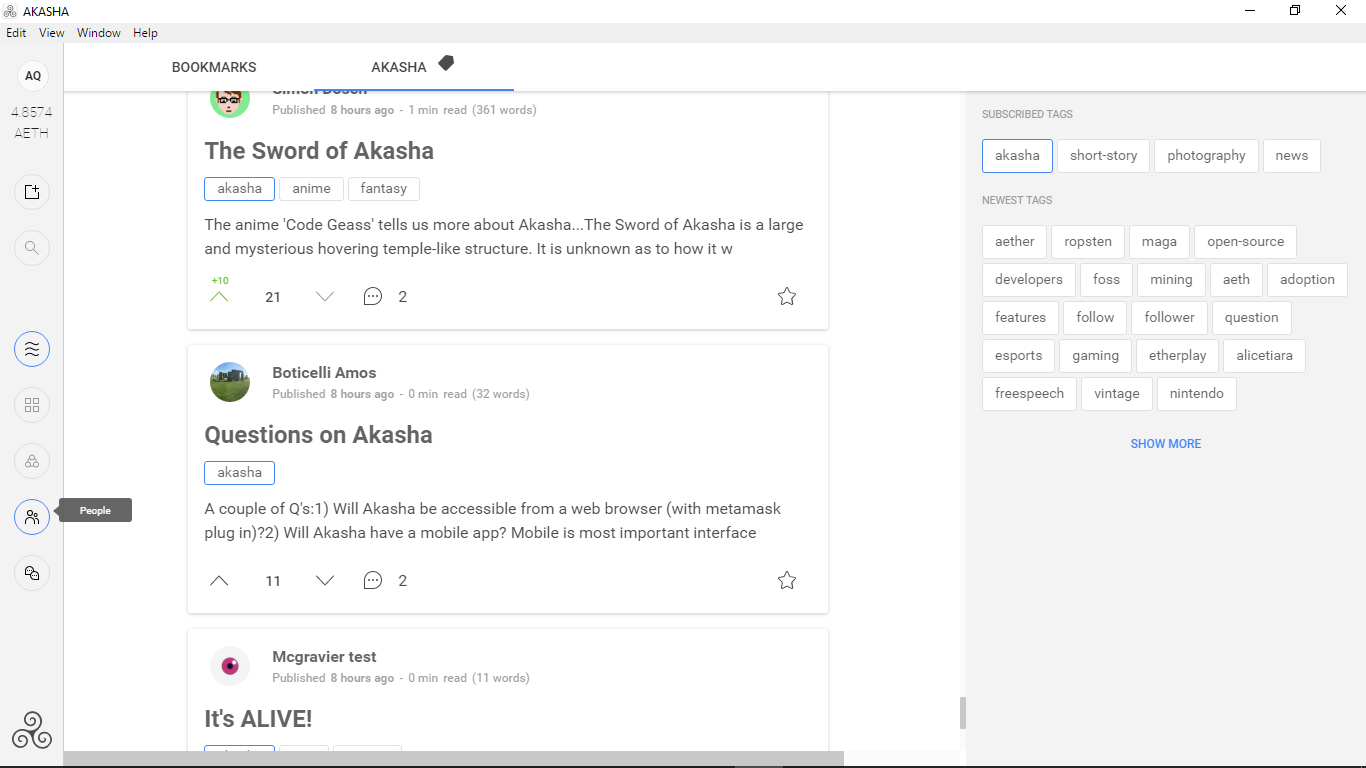Can Ethereum-Based Akasha Revolutionize Social Networks?

“Governments of the Industrial World, you weary giants of flesh and steel, I come from Cyberspace, the new home of the Mind. On behalf of the future, I ask you of the past to leave us alone. You are not welcome among us. You have no sovereignty where we gather…
We will create a civilization of the Mind in Cyberspace. May it be more humane and fair than the world your governments have made before.”
In the late 80s and early 90s, internet pioneers, thinkers, visionaries, artists, entrepreneurs, and everyone in between, imagined a world of no hierarchy, no authority, no distinction between rich or poor, black or white, male or female. But the internet gradually became more filtered, hierarchical, with more authorities involved and more distinctions. Instead of a flat and decentralized world of the mind with no single point of failure, we now largely gather in centralized websites that suddenly find themselves yielding immense power.
Take Google, the main gateway to the internet for most users. From a garage start-up in the late 90s, they have now grown to become one of the richest corporations on earth. Their ambitions have grown in kind to the point where the company has recently renamed itself to Alphabet, indicating their awareness or aim to have full control over the basic blocks of speech, the a-b-c itself.
If Google wished or was so inclined, with just a click they could erase entire topics, subjects, ideas, and since no one can tell as their algorithms are a closely guarded secret rather than being open source, they would be able to do so effectively for the vast majority of people. More subtly, what they rank on the first page for any given search term significantly influences what knowledge and information we access. We have no way of knowing if they are doing so fairly or in a manipulative manner.
All this combines to give Google monopolistic power at an unimaginable scale which has been used either to uncontroversially comply with laws or, quite worryingly, to censor, to the point where they have an entire Wikipedia page on the topic .
Facebook, which has more users than any country on earth has citizens, has been criticized for manipulating trending stories with a campaign seemingly ongoing to pressure them to censor what has been named as “fake news,” a loose and subjective term that can easily be used to outright censor.
Twitter does not even pretend to refrain from censorship, so banning users in a way that appears to be politically motivated. Reddit has gone even further. Following the election of Trump, Steve Huffman, Reddit’s CEO, altered the text of comment posts made by a number of Trump supporters on the 23rd of November 2016, reminding us of a centralized power we had forgotten, the ability of administrators to not just delete information, but change it at will, potentially with no one noticing.
Despite these changes, the 90s dream did not vanish or fade away. It lives on in some last hold outs, such as 4chan, but even there it came under threat when the site’s owner began censoring topics related to GamerGate, an internet controversy that gave rise to such terms as Social Justice Warrior.

That dream also lives on in most coding communities and was carried forward by Bitcoin through its decentralized design. Now, ethereum may take it further.
Akasha, The Decentralized Social Network
Mihai Alisie, Akasha’s founder, co-founder of Ethereum and of the Bitcoin Magazine, has been working for many months on an ethereum based social network, publicly launching on the 16th of January 2017 an alpha testnet version. Uniquely, as far as I’m aware in any event, it is the only truly decentralized social network that uses a peer to peer framework with the only way to actively contribute being through the downloading of a node.
The downloading and installing process is grandma friendly following the traditional just click next. Underneath it is very complex, with the Akasha node running an Ethereum node and an IPFS node, a new data-sharing system which works much like BitTorrent with your content stored locally, but you don’t really need to know much about either or install anything else but the Akasha software which just takes care of everything by simply following the familiar installation wizard set-up.

I’ve been playing around with it for much of today and the experience can be summarized as feeling enthralled to the point of emotional on one hand, and being thankful we no longer use dial-up internet, on the other.
Compared to an ordinary webpage it is slow, but not terribly slow. It takes around 5 seconds for each click to load, with speeds varying dependent on how many users are connected – the more the faster. There is no back button. There are no tabs. Although it has a sort by the option, it’s not operational. The feed stream is limited to one topic. It doesn’t currently support gifs or movies, but it is just an alpha version with all of these features and more likely to be implemented once it launches live on the main ethereum network later on this year.
Compared to other truly peer to peer networks, the alpha release seems promising, allowing you to easily see how the beta will combine all features to give the network a niche. It certainly won’t replace Facebook, Twitter, Reddit, Medium or 4chan any time soon, but it may form its own community with its own culture, a potential blending of art and tech, of storytellers with mathematical thinkers. Some of the inconveniences, in this regard, may even be helpful. Low-quality posters may be bored very quickly, while high-quality posters may find all the creativity energizing.

On the UI front, the stream is compact like twitter. Medium type posts are shown in summary, allowing you to vote and/or bookmark them, with a click giving full content where you can comment. You can also follow individuals as well as subscribe to topics with users able to see each topic’s stream, thus acting somewhat like Reddit.
This blending of features provided by today’s most popular social networks makes it somewhat innovative in itself, but Akasha also experiments in the use of incentives to address the signal to the noise problem. As Alisie stated back in August 2016:
“[Akasha] uses a quadratic voting system with weights between 1-10. So if we’d start from “1 cent per vote” we could get at weight 10 at $1 sent to the content creator. Plus, the quadratic voting has some interesting properties as it enables the content creators to understand “how much” people appreciate/don’t appreciate a particular thing/topic/etc.”
It does so to mimic the behavior of bees when they find an attractive site. The more attractive, the more the intensity and length of their dance to persuade other bees. This translates to giving a post a rating from 1 to 10 to show how much you like it.
The current testnet version starts with 5 AETH, a testnet currency to mimic ETH. After subscribing to a few topics and following a couple of users, I’m down to 4.9656. If the currency had been actual ETH, that means I would have paid about $0.35. With active use, some of my content would be upvoted, thus I’d get back the 35 cents and perhaps more, which means that much of the money will probably circulate around, but for creative types, it might become a useful stream of additional income.
The Freedom Loving Artists
The network is barely out and it already feels edgy. It’s relative secludedness, outside of the internet on a peer to peer network of its own, it’s absolute upholding of free speech on a technical, rather than political, level, its foundation on a brand-new technology which inspires futuristic thinking, it’s, in many ways, radicalness in making censorship impossible, potently combines to attract and inspire today’s thinkers, visionaries, artists and content producers.

M dot Strange, who describes himself as Animator, Filmmaker, Game Dev, Musician, Author, shared a captivating story about a train going nowhere, vividly depicting some city scenes, such as:
“A large colorful mural with the words “rebels” hangs over the grey concrete facade of what is probably a high school – a public prison built to break souls and fit molds.”
B.J. Murphy, a writer, author, futurist, poet, and activist has shared excerpts from a number of stories ranging from sci-fi to thriller. Others have shared professional pictures, fantasy tales, analysis of how we may reach the level of a Type One civilization, drawings, as well as simply their perspective.
The Overground Underground
Social Networks, like the year’s seasons, start with the joyous spring when the best leave older and stale communities to form a new one, sunny summer when the community has a nice noise to signal ratio, leafy autumn when it has grown too large, and cold snowy winter when the roads are largely empty.
It is doubtful Akasha will escape the cycle if it manages to enter it, but for now, it has all the ingredients to begin spring. It is unique, it is very innovative and it is also radical. The technical inability of any authority to censor content or shut down the peer to peer and decentralized nodes spread across the world means that we don’t really know how truly atrocious posts can be filtered out in practice. Downvoting should largely help. The ability to follow individuals too. The ability to filter through tags and perhaps at the IPFS level allowing users to apply a filter list of keywords or content of their choice might also help. But, we don’t really know, it’s very much an experiment.
That makes it edgy, a place where curious minds might want to go. Some for the art, some for the stories, some for the analysis, some to support a non-censorable network where admins can’t just change the content.
Finally, Alisie appears to be scientifically and technically minded. Unlike some other networks, Akasha is actually decentralized as it runs through a peer node which has to synchronize with the ethereum network and IPFS. The work done so far suggests thorough attention was paid to produce something very new and seemingly thought out. The quadratic voting is an interesting aspect in its own right.
All of the above combines to create fertile grounds for a community to form and open a new liberating space that may attract the writers, painters, producers, thinkers, visionaries, pioneers, the curious, and all those who dream of a better world.
“You are terrified of your own children since they are natives in a world where you will always be immigrants. Because you fear them, you entrust your bureaucracies with the parental responsibilities you are too cowardly to confront yourselves. In our world, all the sentiments and expressions of humanity, from the debasing to the angelic, are parts of a seamless whole, the global conversation of bits. We cannot separate the air that chokes from the air upon which wings beat.” A Declaration of the Independence of Cyberspace, Davos, 1996.
Disclaimer: The views expressed in the article are solely that of the author and do not represent those of, nor should they be attributed to CCN.com.
Images from Akasha and Shutterstock.